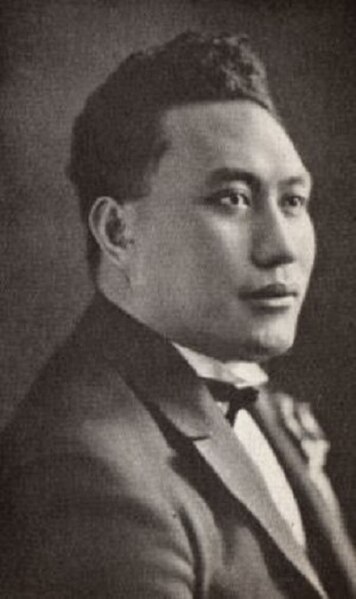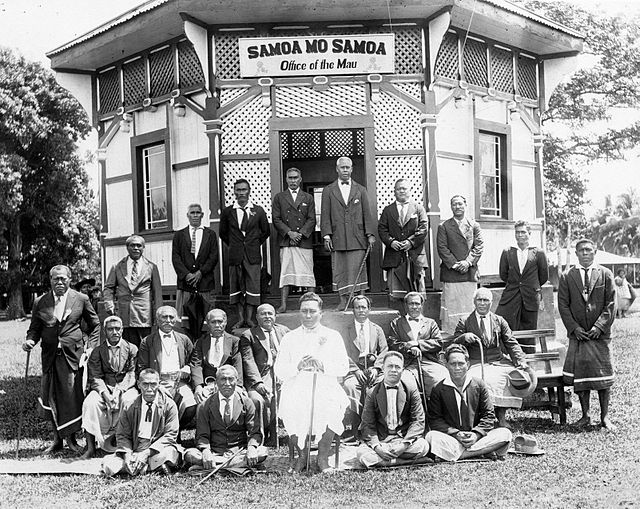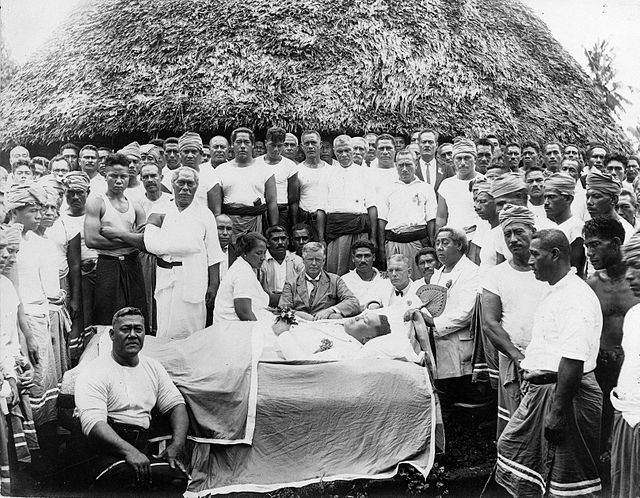Tupua Tamasese
Videos
Page
Tupua (known as Tupua Tamasese) is a state dynasty and one of the four paramount chiefly titles of Samoa, known as the Tama-a-Aiga or 'Sons of the Great Families'). It is the titular head of one of Samoa's two great royal families - Sā Tupua, the lineage of Queen Salamasina. The 'Tupua' refers to Salamasina's descendant, King Tupua Fuiavailili, who was the first to unite both of Salamasina's descent lines in his personage and ascended to the Kingship of Samoa in c.1550, upon the death of his adoptive father, King Muagututi'a. Tupua Fuiavailili was adopted by his aunt, Fenunu'ivao (daughter of Leutele and wife of King Muagututi'a) and named as the King's successor. Tupua's rise also led to the first usage of the term "Tama-a-'aiga" by the orator polity of Leulumoega and Lufilufi, in reference to his many genealogical connections to the great families of Ātua. The 'Tamasese' part refers to his descendant Tupua Tamasese Titimaea, whose prowess in battle and generosity won favour with many of his followers and whose actions restored the Salamasina line's prestige. All subsequent Tupua title holders have thus carried the two names together since then.

Leader of the Samoa's independence movement (the Mau Movement), Tupua Tamasese Lealofi III.

Mau leaders and Tupua Tamasese Lealofi III (centre, in white) in front of Mau office, Vaimoso 1929

Tupua Tamasese Lealofi III lies in state after being shot and killed during Black Saturday.

Samoa's former Prime Minister and Head of State and current holder of the title, Tui Atua Tupua Tamasese Efi
Faʻamatai
Videos
Page
Fa'amatai is the indigenous political ('chiefly') system of Samoa, central to the organization of Samoan society. It is the traditional indigenous form of governance in both Samoas, comprising American Samoa and the Independent State of Samoa. The term comprises the prefix fa'a and the word matai.

Three matai, the two older men bearing the symbols of orator chief status – the fue (flywhisk made of organic sennit rope with a wooden handle) over their left shoulder. The central elder holds the orator's wooden staff (to'oto'o) of office and wears an 'ie toga, fine matting. The other two men wear tapa cloth with patterned design

Lepea village with round meeting houses where matai meetings take place and open commons area (malae) for outdoor ceremonies.

Government Building in the capital Apia housing administrative ministerial offices.

High chief Seumanutafa Pogai of Apia, c. 1890–1910. (photo by Thomas Andrew)